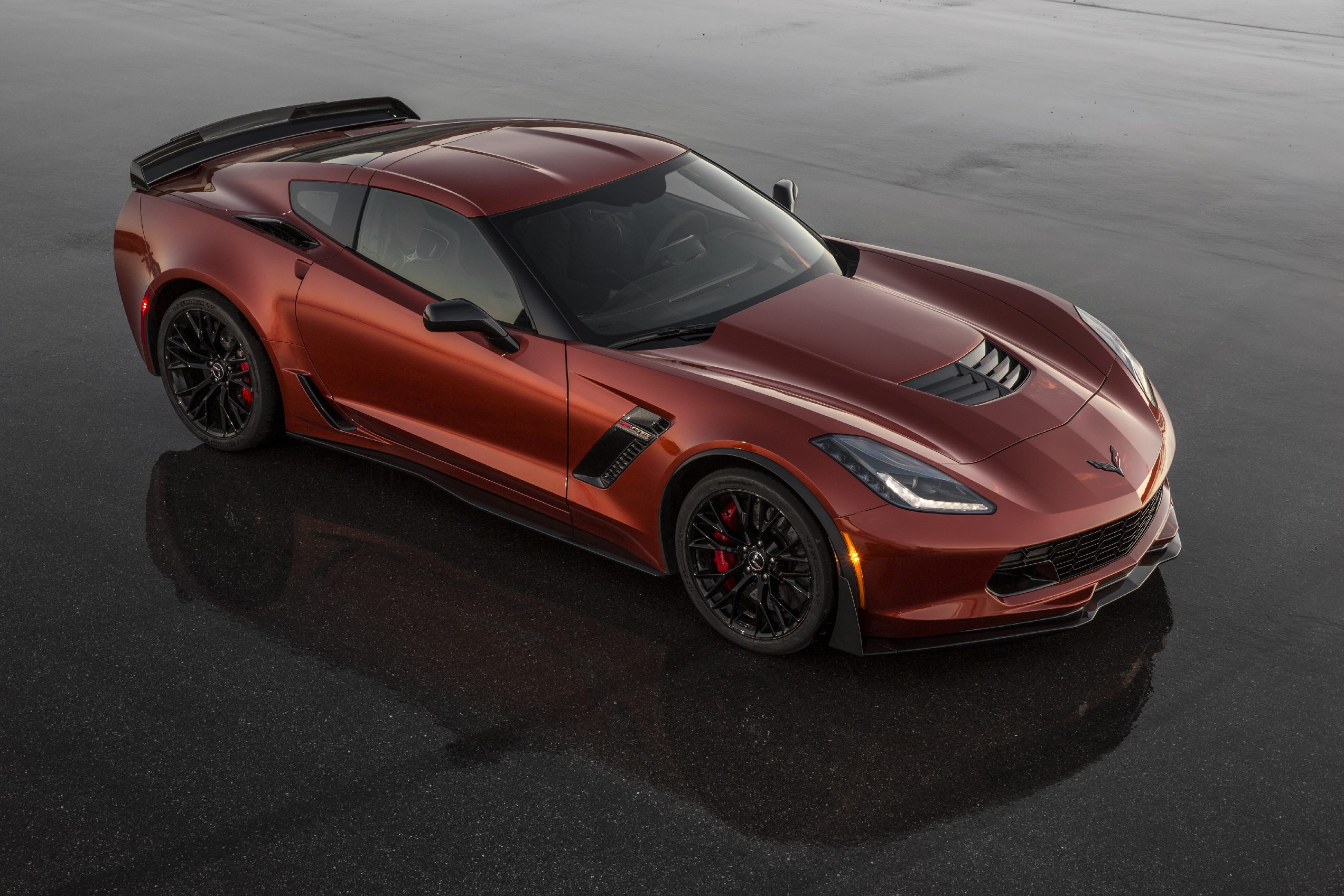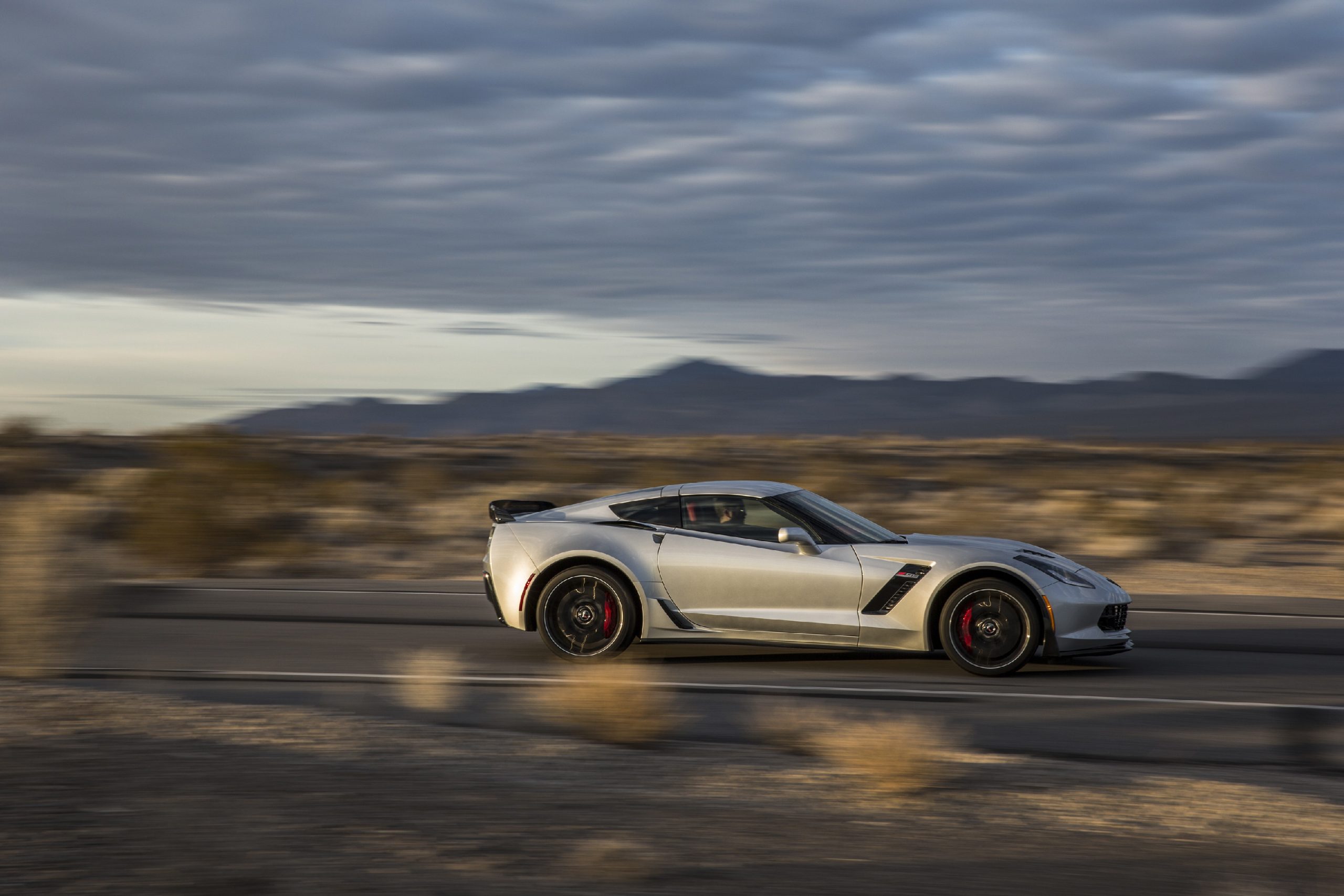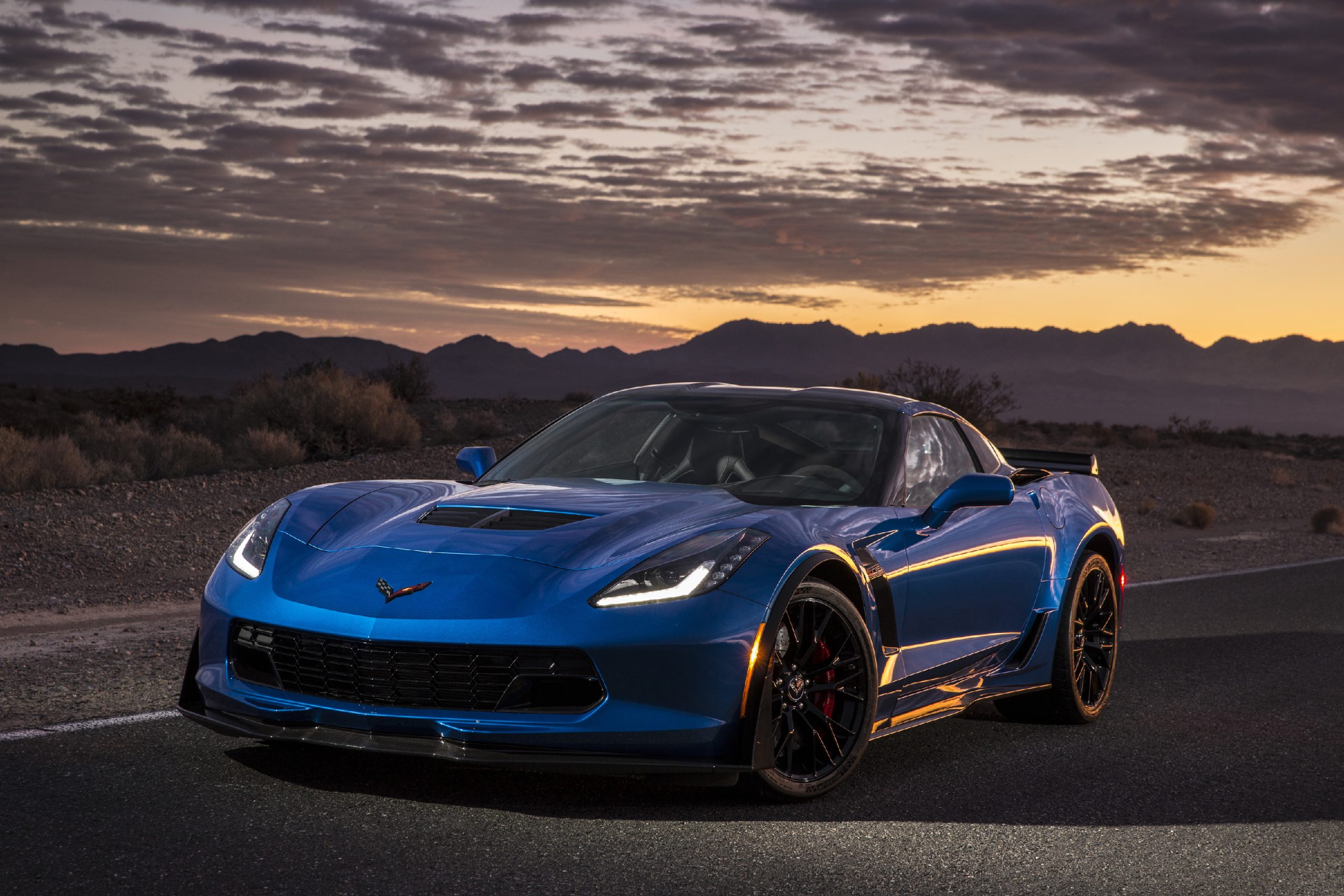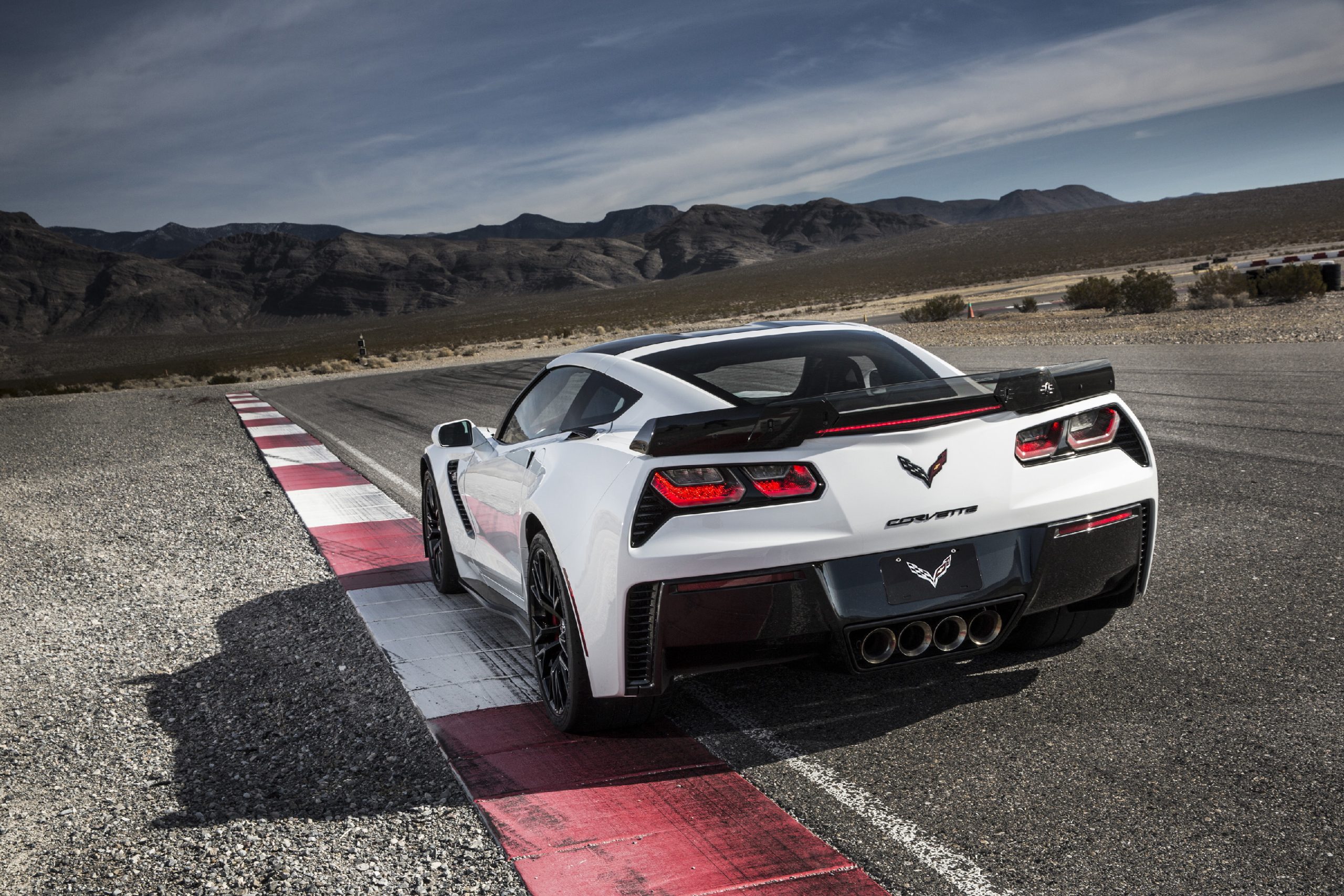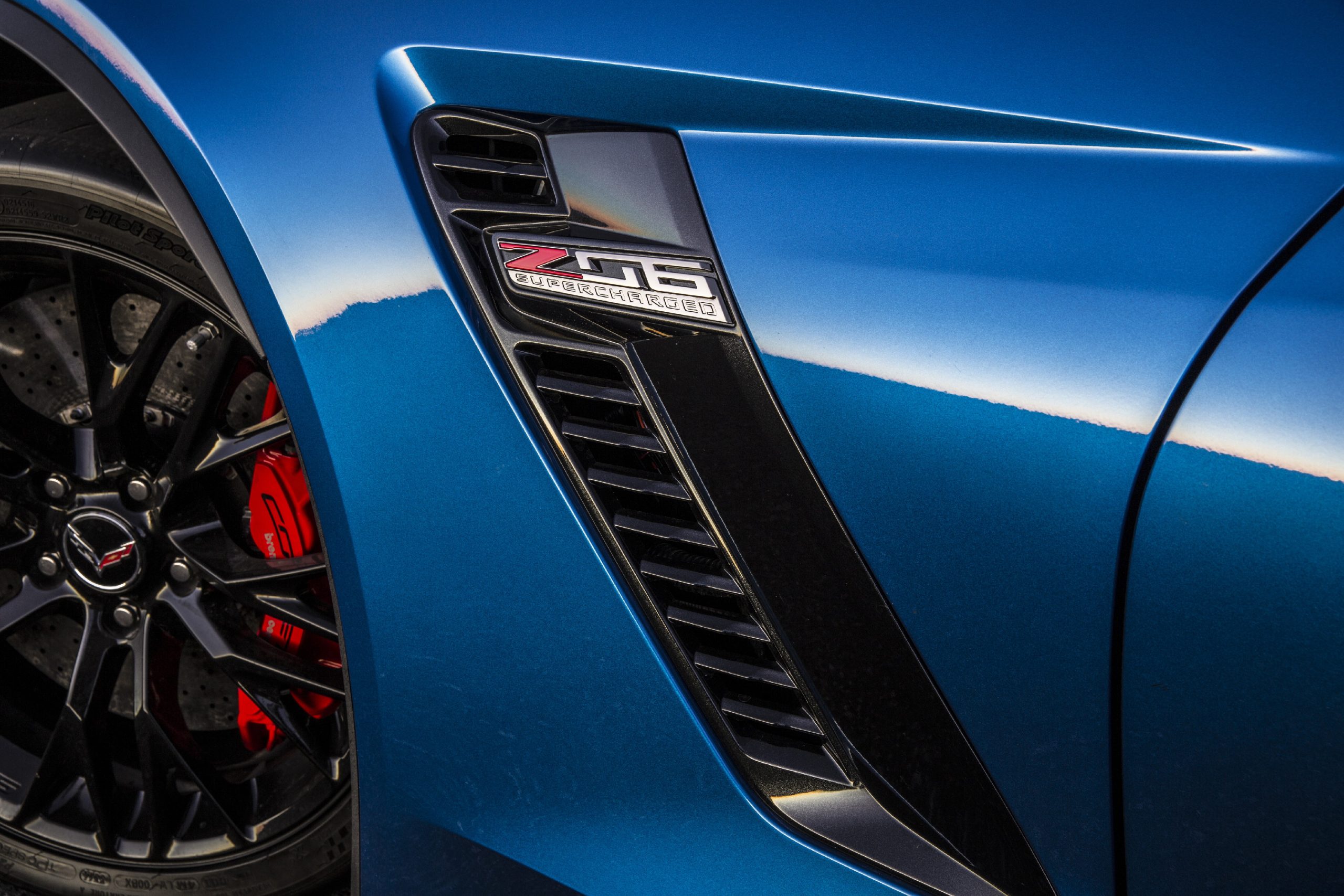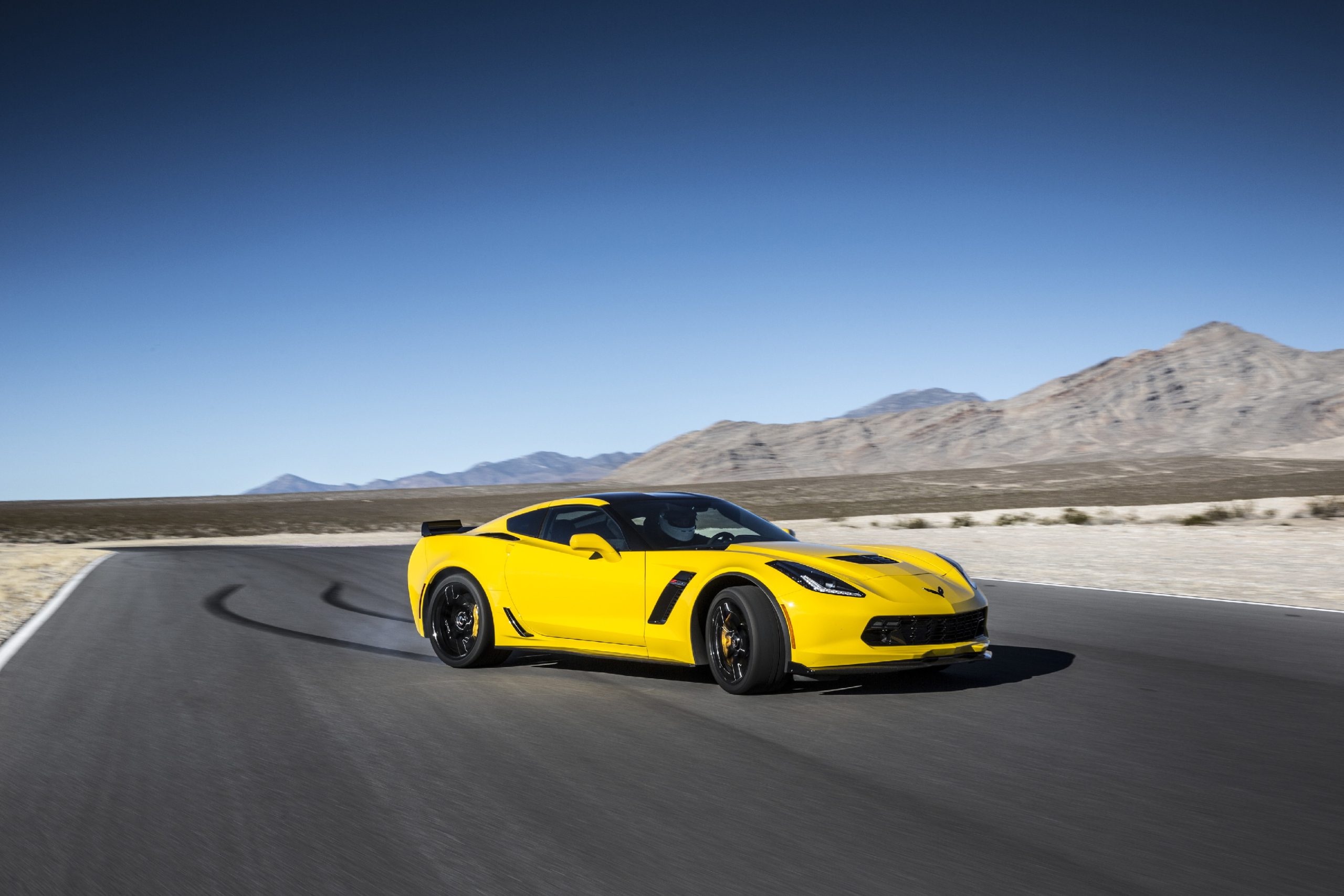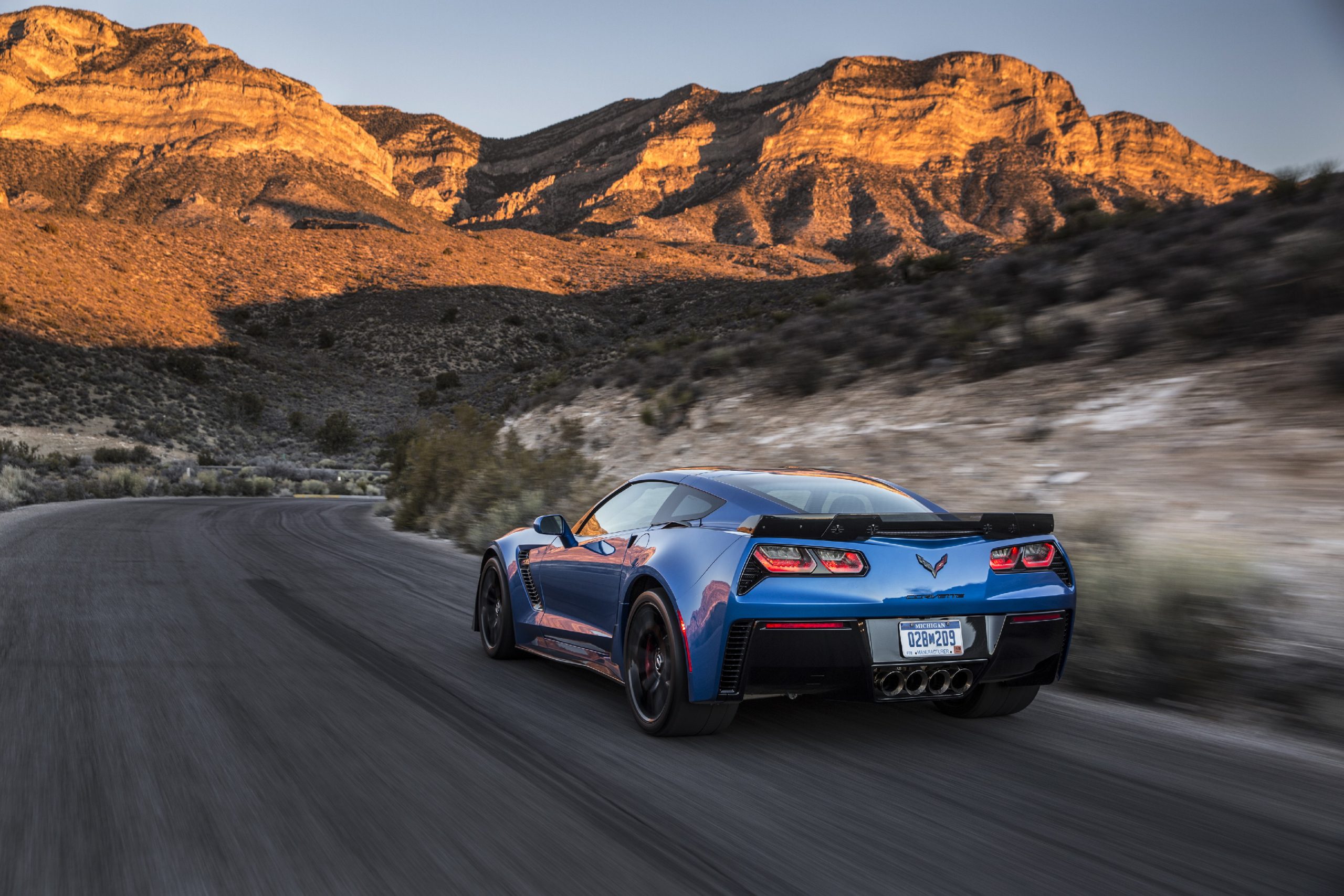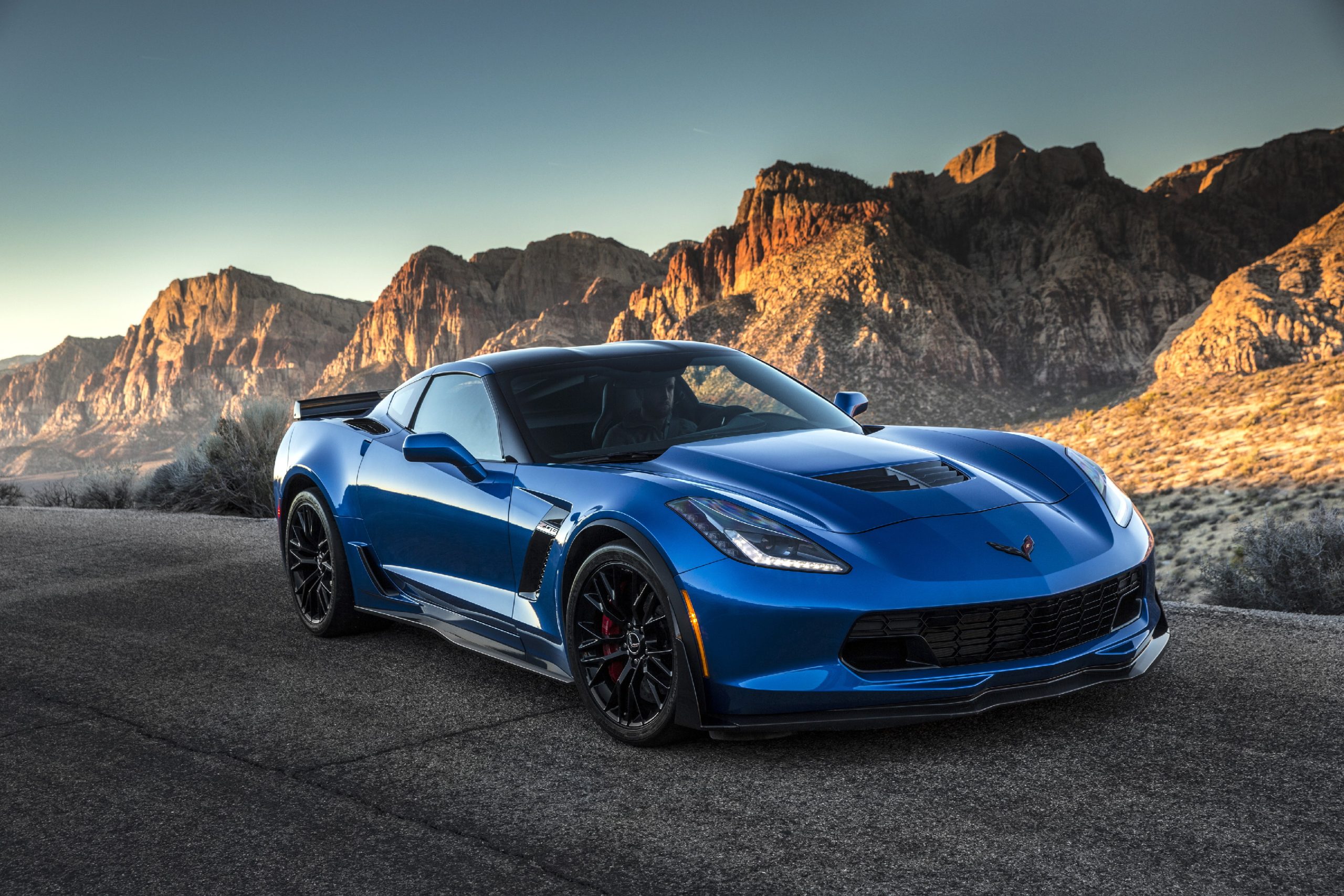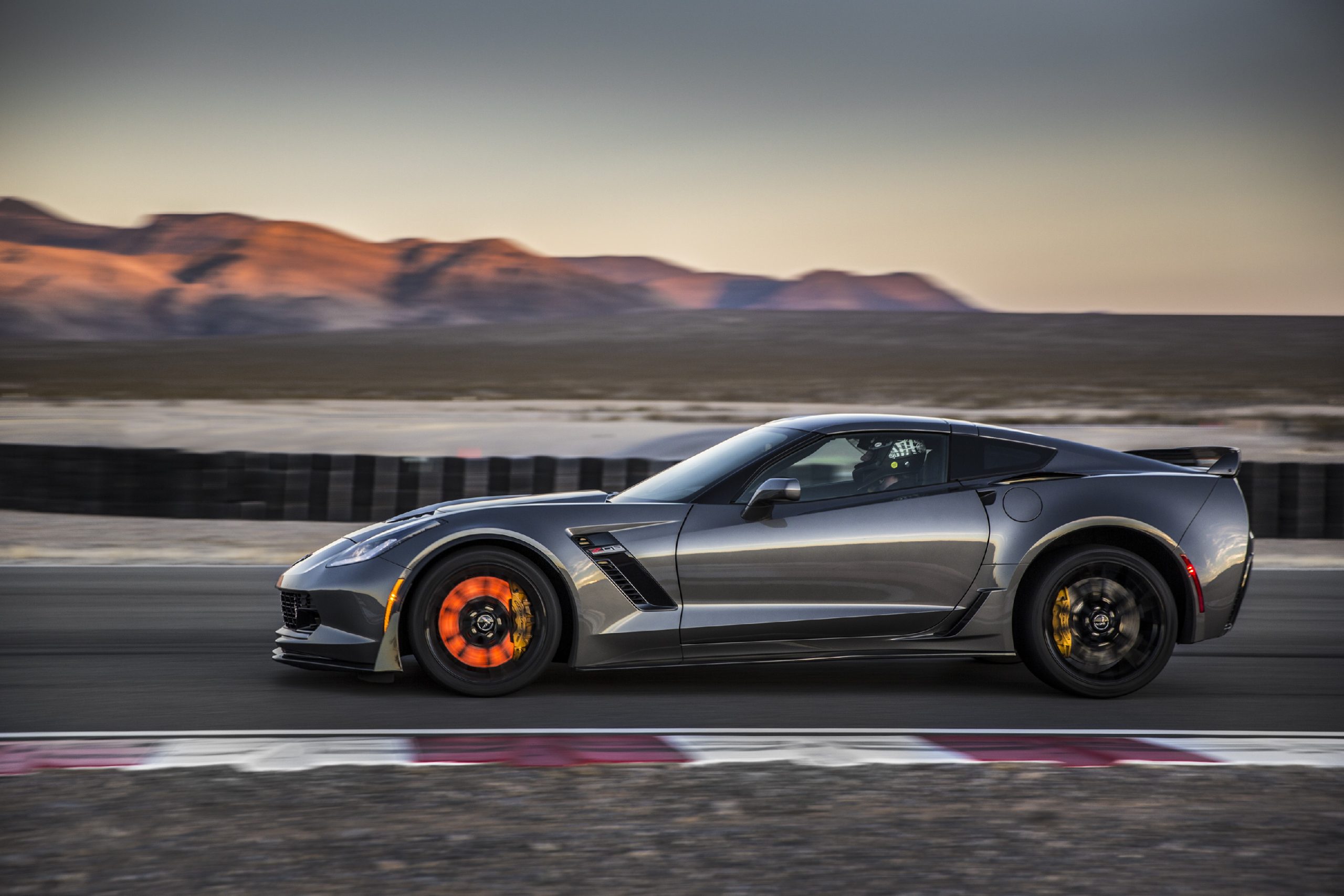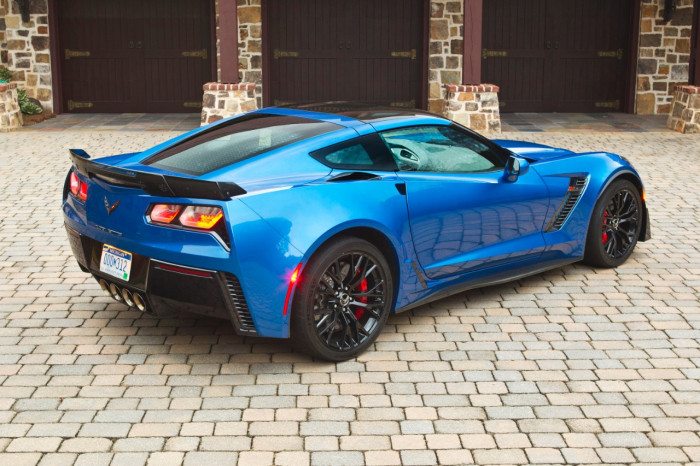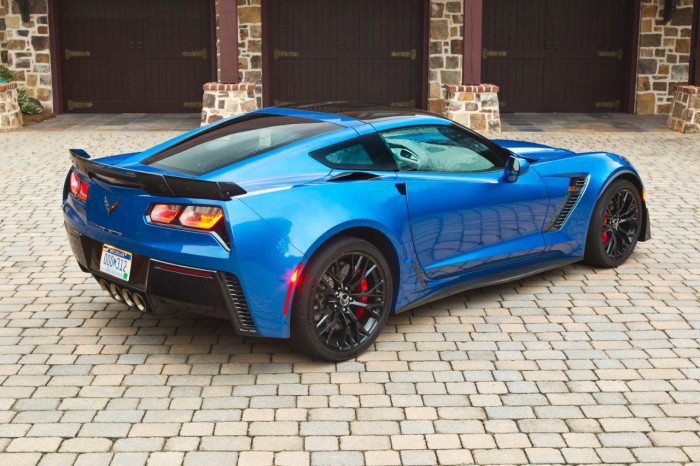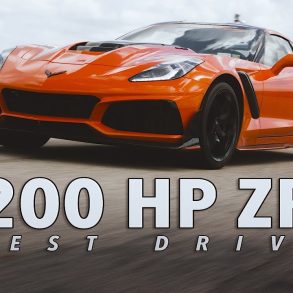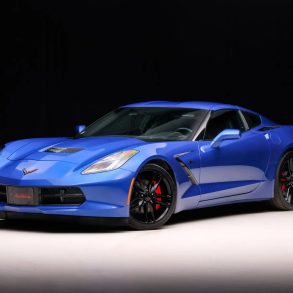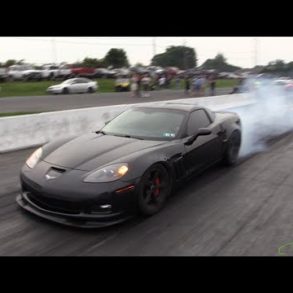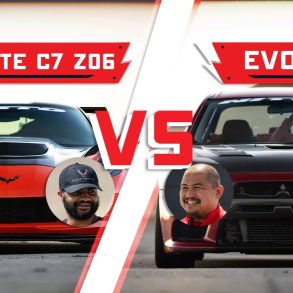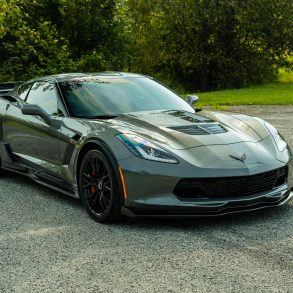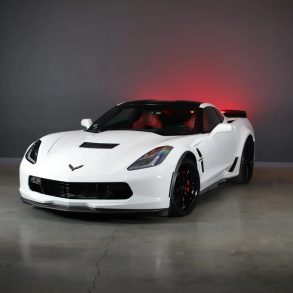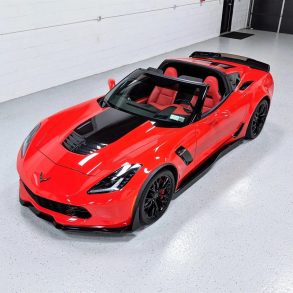C7 Chevrolet Corvette Z06 Guide
The Z06 rejoins the Corvette lineup for 2015 as the most capable model in the iconic car’s 62-year history. It stretches the performance envelope for Corvette with unprecedented levels of aerodynamic downforce – and it is the first Corvette Z06 to offer a supercharged engine, an eight-speed paddle-shift automatic transmission and, thanks to a stronger aluminum frame, a removable roof panel.
The new LT4 supercharged 6.2L V-8 engine is SAE-certified at 650 horsepower (485 kW) at 6,400 rpm and 650 lb-ft of torque (881 Nm) at 3,600 rpm – making the 2015 Corvette Z06 the most powerful production car ever from General Motors and one of the most powerful production cars available in the United States.
For the first time since 1963, the Z06 is also offered in coupe and convertible models. In fact, building a modern Z06 Convertible was only enabled by recent technological advancements, according to Corvette chief engineer Tadge Juechter: “Simply put, until recently it was not possible to create an open-roof structure strong enough to meet Corvette’s highest performance levels. It required advancements in computer-aided engineering, metallurgy and manufacturing – many of which did not exist five years ago – to make a frame strong enough for a Z06 Convertible.”
The aluminum structure is 20 percent stiffer than the previous, fixed-roof Z06. As there are no structural reinforcements needed for the Z06 Convertible, it has a nearly identical curb weight as the Z06 Coupe. They also share the same chassis tuning, powertrain output, driver technologies and equipment options – including a track-focused Z07 Performance Package.
The Z07 package adds adjustable front and rear aero components for unprecedented aerodynamic downforce, Michelin Pilot Super Sport Cup tires for enhanced grip, and Brembo carbon ceramic-matrix brake rotors that improve braking performance and contribute to greater handling through reduced unsprung weight.
“The Corvette Z06 is a great example of the technology transfer between racing and production Corvettes,” said Juechter. “First, we took what we learned on the Corvette Racing C6.R and applied that to the all-new Corvette Stingray. Then, using the Stingray as a foundation, the Z06 and C7.R were developed to push the envelope of performance on the street and the track.”
The all-new, industry-leading Performance Data Recorder enables users to record high-definition video, with telemetry overlays, of their driving experiences on and off the track. It was named Best Automotive Electronics Product at the 2014 Consumer Electronics Show, by Engadget.
Designed for downforce
The performance targets of the Z06 also posed a challenge for the design team, which had to create a striking design that also contributed to increased capabilities. The design changes began not with the exterior panels, but the tires.
To deliver the levels of grip needed for the Z06’s performance targets, the car was fitted with larger Michelin tires (Pilot Super Sport tires for the Z06; Sport Cup 2 tires with the Z07 package). The P285/30ZR19 front tires are 1.5 inches wider than the tires on the Stingray, while the 335/25ZR20 rear tires are two inches wider.
And to cover the wider tire tread, the fenders of the Z06 were extended by 2.2 inches (56 mm) at the front, and 3.15 inches (80 mm) at the rear. These extensions give the Corvette Z06 a wider, lower appearance further emphasized by a unique rear fascia. It incorporates the same taillamp assemblies as the Stingray, but on the Z06 the taillamps are pushed approximately three inches farther apart, toward the edges of the body.
“Practically every exterior change served a functional purpose, as this beast needed more of everything,” said Tom Peters, Corvette design director. “The flared fenders accommodate larger, wider wheels and tires for more grip. The larger vents provide more cooling air to the engine, brakes, transmission and differential for increased track capability. The more aggressive aerodynamic package generates true downforce for more cornering grip and high-speed stability.”
The tires are mounted on lightweight, spin-cast aluminum wheels that are also wider than the Stingray (19 x 10 inches in front and 20 x 12 inches in the rear). Their open, ultralight design showcases the massive Brembo brakes, which are part of the design aesthetic:
- The Z06 features two-piece steel rotors, measuring 14.6 x 1.3-inch (371 x 33 mm) front and 14.4 x 1-inch (365 x 25 mm) rear, with aluminum six-piston and four-piston fixed calipers, respectively
- The Z07 package adds larger, 15.5 x 1.4-inch (394 x 36 mm) front and 15.3 x 1.3-inch (388 x 33 mm) carbon ceramic-matrix brake rotors for consistent performance lap after lap, and collectively save 23 pounds over the standard Z06 rotors.
To harness the cornering and braking grip afforded by the larger tires and brakes, the exterior of the Corvette Z06 is tailored to produce aerodynamic downforce that presses the tires to the ground at high speeds.
The Z06 offers three increasing levels of aerodynamic downforce:
- The standard Z06 features a front splitter, spats around the front wheel openings, a unique carbon-fiber hood with a larger vent, and a rear spoiler
- An available carbon-fiber aero package – in either black or a visible carbon-fiber finish – adds a carbon fiber front splitter with aviation-style winglets, carbon fiber rocker panels, and a larger rear spoiler with a fixed wickerbill, which combine to create true aerodynamic downforce
- The available Z07 package add larger winglets to the front splitter, along with an adjustable, see-through center section on the rear spoiler for track use. With this package, the Corvette Z06 delivers the most aerodynamic downforce of any production car GM has tested.
The exterior design also reflects the increased cooling required for the new Corvette Z06. For example, the mesh pattern on the front fascia was painstakingly designed to deliver the most possible airflow to the supercharger’s intercooler heat exchanger, so much so that the mesh grill directs more air into the engine bay than if the grille was removed. The unique grille also features dedicated brake-cooling intakes and wider grille outlets on the bottom serve as air diffusers. The grille is complemented with a larger hood vent, which vents hot air from the engine compartment and contributes to downforce by allowing air driven through the grille to exit through the hood rather than being forced under the car, which could create lift.
Additional cooling elements include larger front fender vents and unique air blades over the inlets on the rear fenders of Coupe models, which force about 50 percent more air into the cooling ducts for the transmission and differential coolers than those on the Stingray. Convertible models feature under-body inlets. To cope with the additional airflow, Z06 Coupe and Convertible also have larger rear-fascia openings than the Stingray.
Standard front and rear brake-cooling ducts, including Z06-signature rear ducts integrated in front of the rear fender openings, are also part of the functional design changes over Stingray models.
Ten exterior colors are offered: Laguna Blue Tintcoat, Daytona Sunrise Orange Metallic, Velocity Yellow Tintcoat, Arctic White, Blade Silver Metallic, Black, Shark Gray Metallic, Crystal Red Tintcoat, Torch Red and Night Race Blue Metallic.
Convertible considerations
Like the structure, there are only minor design changes from the Z06 Coupe to Convertible. The convertible features a fully electronic top that can be lowered remotely using the car’s key fob. The top can also be opened or closed on the go, at speeds of up to 30 mph (50 km/h).
With the top up, the Z06 Convertible is designed for a refined driving experience. A thick fabric top – offered in four colors – with sound-absorbing padding and a glass rear window contribute to a quiet cabin and premium appearance.
With the top down, the Corvette’s signature profile is further accentuated. Behind the seat backs, dual Carbon Flash-painted or available carbon fiber accent panels enhance the character lines of the tonneau cover. Corvette Stingray’s signature “waterfall” design originates in the valley between the nacelles, bringing the exterior color into the interior.
The power-operated tonneau cover necessitated moving the air intakes for the differential and transmission coolers, from the rear quarter panels on the Z06 Coupe to the underbody of the Z06 Convertible. Otherwise, both models share the same, performance-driven aesthetic.
Interior features
Inside, the Corvette Z06 is distinguished from the Corvette Stingray by unique color schemes that emphasize the driver-focused cockpit, and a unique, flat-bottomed steering wheel.
Like the Stingray, the Z06 will be offered with two seating choices: a GT seat, for all-around comfort, and a Competition Sport seat with more aggressive side bolstering, which provides greater support on the track. The frame structure for both seats is made of magnesium, for greater strength. They’re also more rigid, contributing to the enhanced feeling of support during performance driving.
Several trim combinations are offered for the seats:
- 1LZ: GT seats with perforated Mulan leather seating surfaces or Competition Sport seats with leather seating surfaces and sueded microfiber inserts
- 2LZ: GT or Competition Sport seats with perforated Mulan leather seating surfaces; GT or Competition Sport seats with leather seating surfaces and sueded microfiber inserts
- 3LZ: GT seats with perforated Napa leather seating surfaces; Competition Sport seats with perforated Mulan leather seating surfaces; GT or Competition Sport seats with leather seating surfaces and sueded microfiber inserts.
All models feature a fully-wrapped interior, where every surface is covered with premium, soft-touch materials. Available materials, depending on the trim level, include Napa leather, aluminum, carbon fiber and micro-suede. There’s even a micro-LED screen for the passenger’s climate control placed below the vent on the dash, away from the performance features on the instrument panel.
Additional interior features include:
- New Performance Data Recorder (included with the available navigation system)
- Color driver information center is standard on all trim levels
- Electric-locking glovebox
- Eight-inch-diagonal color touch radio with Chevrolet MyLink is standard on all trim levels; a navigation system is standard on 3LT and available on 1LT and 2LT. Includes behind-screen storage compartment
- Bose® nine-speaker premium audio system is standard on 1LZ
- Bose® 10-speaker premium audio system – with bass box – is standard on 2LZ and 3LZ
- Head-up display with color readouts – including g-meter in track mode – is standard on 2LZ and 3LZ
- Keyless entry with push-button starting is standard on all trim levels
- Rear-vision camera is standard on all trim levels
- Power tilting/telescoping steering column is standard on all trim levels
- Heated and ventilated seats are standard on 2LZ and 3LZ
- Sueded microfiber-wrapped upper interior trim package is standard on 3LZ and includes headliner, visors, trim above windshield and rear window, A-pillar trim and area around quarter window
- Interior colors: Dark Gray, Blue, Jet Black, Kalahari and Adrenaline Red.
The Z06 also benefits from interior details designed for high-performance driving, first introduced on the Stingray, including a steel-reinforced grab bar on the center console for the passenger and soft-touch materials on the edge of the console, where the driver naturally braces during high-load cornering.
The heart of the 2015 Corvette Z06 is the all-new LT4 6.2L supercharged V-8 engine, expected to deliver an SAE-certified 650 horsepower (485 kW) and 650 lb-ft of torque (881 Nm). To balance performance and efficiency, the LT4 leverages the same trio of advanced technologies introduced on the Corvette Stingray: direct injection, Active Fuel Management, or cylinder deactivation, and continuously variable valve timing.These technologies – combined with the fuel-efficient multi-speed transmissions, aerodynamic design and lightweight construction – help make the new Z06 surprisingly fuel efficient.
To maintain the Z06’s mass and performance targets, the LT4 engine was designed with a more-efficient, more-compact supercharger. Even with its integrated supercharger/intercooler assembly mounted in the valley between the cylinder heads, the engine is only about one inch (25 mm) taller than the Corvette Stingray’s LT1 engine – while delivering nearly 37 percent more horsepower and 40 percent more torque.
A new 1.7L supercharger spins at up to 20,000 rpm – 5,000 rpm more than the supercharger on the Corvette ZR1’s engine. The rotors are smaller in diameter, which contributes to their higher-rpm capability – and enables them to produce power-enhancing boost earlier in the rpm band. That boost is achieved more efficiently via a more direct discharge port that creates less turbulence, reducing heat and speeding airflow into the engine.
The LT4 engine also has several unique features designed to support its higher output and the greater cylinder pressures created by forced induction, including:
- Rotocast A356T6 aluminum cylinder heads that are stronger and handle heat better than conventional aluminum heads
- Lightweight titanium intake valves
- Machined, forged powder metal steel connecting rods for reduced reciprocating mass
- High 10.0:1 compression ratio – for a forced-induction engine – enhances performance and efficiency and is enabled by direct injection
- Forged aluminum pistons with unique, stronger structure to ensure strength under high cylinder pressures
- Stainless steel exhaust manifolds that offer greater structure at higher temperatures
- Lightweight aluminum balancer
- Standard dry-sump oiling system with a dual-pressure-control oil pump.
Seven-speed manual and new eight-speed automatic transmissions
The supercharged LT4 is offered with a standard seven-speed manual transmission with Active Rev Match, or an all-new 8L90 eight-speed paddle-shift automatic transmission designed to enhance both performance and efficiency.
The seven-speed manual incorporates rev-matching technology for upshifts and downshifts. This driver-selectable feature can be easily engaged or disengaged via paddles on the steering wheel. The seven-speed is used with a new dual-mass flywheel and dual-disc clutch, which deliver greater shift quality and feel through lower inertia.
The eight-speed automatic is tuned for world-class shift-response times, and smaller steps between gears keep the LT4 within the sweet spot of the rpm band, making the most of the output of the supercharged engine for exhilarating performance and greater efficiency.
For performance driving, the transmission offers full manual control via steering wheel paddles, and unique algorithms to deliver shift performance that rivals the dual-clutch/semi-automatic transmissions found in many supercars – but with the smoothness and refinement that come with a conventional automatic fitted with a torque converter.
In fact, the 8L90’s controller analyzes and executes commands 160 times per second, and wide-open throttle upshifts are executed up to eight-hundredths of a second quicker than those of the dual-clutch transmission offered in the Porsche 911.
Featuring four gearsets and five clutches, creative packaging enables the GM-developed eight-speed automatic to fit the same space as the six-speed automatic in the Corvette Stingray. Extensive use of aluminum and magnesium make it more than eight pounds (4 kg) lighter than the six-speed. Along with design features that reduce friction, the 8L90 is expected to contribute up to 5-percent greater efficiency, when compared with a six-speed automatic.
Track-proven structure and technologies
The 2015 Corvette Z06 leverages the technologies introduced on the Corvette Stingray, including the strategic use of lightweight materials and advanced driver technologies, with unique features and calibrations tailored for its capabilities.
“Our mission with the seventh-generation Corvette was to make the performance levels more accessible, enabling drivers to exploit every pound-foot of torque, every “g” of grip and every pound of downforce,” said Juechter. “It’s a philosophy we introduced with the 460-horsepower Corvette Stingray – and one that’s even more relevant with 650 horsepower at your beck and call.”
For the first time ever, the Corvette Z06’s aluminum frame will be produced in-house at General Motors’ Bowling Green assembly plant. It’s the same robust, lightweight frame used on the Corvette Stingray and it will be used essentially unchanged for the C7.R race cars.
The stiffer design of the aluminum frame allows the Corvette Z06 to be offered with a removable roof panel for the first time. With the lightweight, carbon fiber roof panel removed, the new Corvette Z06 offers 20 percent more structural rigidity than the previous model’s fixed-roof design. It is 60 percent stiffer than the previous model with the roof panel installed.
The new Z06 retains the SLA-type front and rear suspension design of the Corvette Stingray but is uniquely calibrated for the higher performance threshold. The third-generation Magnetic Selective Ride Control dampers are standard on Z06. They can be adjusted for touring comfort or maximum track performance via the standard Driver Mode Selector.
Like the Stingray, the Driver Mode Selector tailors up to a dozen features of the Z06 to suit the driver’s environment, including:
- Launch control: Available in Track mode for manual and automatic transmissions, providing maximum off-the-line acceleration
- Active handling (StabiliTrak electronic stability control): A “competitive” setting is available in Track mode and is more suited for on-track conditions. It can also be disabled, giving the driver complete control
- Traction control: Weather mode tailors traction control and engine torque for driving in inclement conditions
- Performance Traction Management: Available in Track mode and offers five settings of torque reduction and brake intervention for track driving
- Electronic Limited Slip Differential: Adjusts the rate at which the limited slip engages, to balance between steering response and stability in different driving conditions with more aggressive performance in Sport and Track modes.
The smart electronic limited-slip differential, or eLSD, is standard on the Z06 to make the most of the torque split between the rear wheels. The system features a hydraulically actuated clutch that can infinitely vary clutch engagement and can respond from open to full engagement in tenths of a second. It shifts torque based on a unique algorithm that factors in vehicle speed, steering input and throttle position to improve steering feel, handling balance and traction.
The eLSD is fully integrated with Electronic Stability Control and Performance Traction Management systems. Its calibrations vary among three modes, based on the Drive Mode Selector setting:
- Mode 1 is the default setting for normal driving and emphasizes vehicle stability
- Mode 2 is engaged when electronic stability control is turned off in the Sport or Track modes. This calibration enables more nimble turn-in and traction while accelerating out of a corner
- Mode 3 is automatically selected when Performance Traction Management is engaged. This calibration has the same function as Mode 2, but is fine-tuned to work with Performance Traction Management.
Performance Data Recorder
The award-winning, industry-first Performance Data Recorder – or PDR – enables users to record high-definition video, with telemetry overlays, of their driving experiences on and off the track. It was developed with Cosworth, the motorsports-engineering company that supplies the Corvette Racing team’s data acquisition and telemetry electronics system.
The PDR system includes three major components, all seamlessly integrated into the Corvette Z06’s interior. First is a high-definition camera, mounted within the windshield header trim, which records the driver’s point-of-view through the windshield. Audio is recorded via a dedicated microphone in the cabin.
Second is a self-contained telemetry recorder, which uses a dedicated GPS receiver that operates at 5 hertz, or cycles per second – five times faster than the in-dash navigation system, which allows more precise positioning and corner traces. Finally, the system features a dedicated SD-card slot in the glove box for recording and transferring video and vehicle data. Recording time depends on the capacity of the memory card, but an 8-gigabyte card can record approximately 200 minutes, while a 32-GB card stores up to about 800 minutes – more than 13 hours of driving time.
The PDR system can record video with three data overlay options, each rendered in real time:
- Track Mode – shows the maximum level of data on the screen, including speed, rpm, g-force, a location-based map, lap time and more.
- Sport Mode – shows fewer details on the overlay but includes key data including speed and g-force
- Touring Mode – simply records and displays video and audio of the drive with no data overlay
- Performance Mode – records performance metrics, such as 0 to 60 mph acceleration, 1/4-mile speed and elapsed time, and 0-100-0 mph runs.
The video can be viewed on the Corvette Z06’s eight-inch color touchscreen when the car is parked, or downloaded to a computer for further editing, and sharing video via social media sites. For users who want a more in-depth understanding of their performance, the PDR vehicle data can be opened in the included “Cosworth Toolbox” software, which combines Cosworth’s professional-level motorsport data analysis with an easy-to-use graphic interface.
Chevrolet MyLink and OnStar with 4G LTE
Chevrolet MyLink gives customers the best of both worlds when it comes to infotainment. It provides easy, intuitive operation of basic functions, yet it is also highly customizable and capable of linking up to 10 devices such as smartphones, SD cards and MP3 players, giving users more ways of staying connected. It is standard on all trim levels.
Enhanced connectivity and convenience includes a Text Message Alerts feature for smartphone users with Bluetooth profile (M.A.P.), which reads incoming texts through the vehicle’s speakers, and Siri Eyes Free for iPhone iOS 6 and iOS 7 users to enhance connectivity and convenience. Each enables voice-controlled connectivity, to help keep phones in pockets and hands on the wheel.
New OnStar with 4G LTE and built-in Wi-Fi hotspot provides a mobile hub for drivers and passengers, for easier access to apps and services that require a high-speed data connection. 4G LTE is the most current and fastest mobile data network – 10 times faster than 3G. And with OnStar, it also offers stronger, broader coverage than smartphones on the same network and it’s easy to use: If the vehicle is on, the connection is on.
The Corvette Z06 is built at GM’s Bowling Green, Ky., assembly plant.
